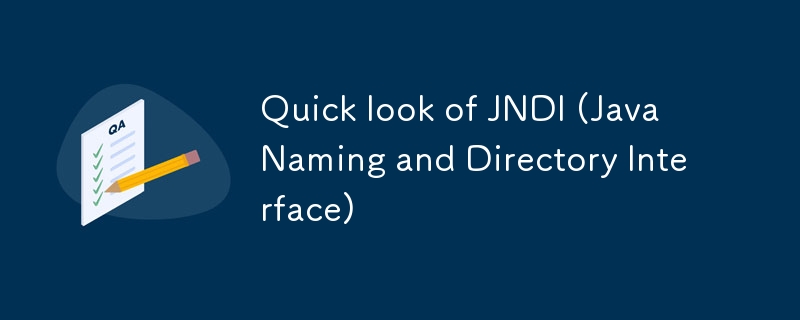

Simple to say, programmer can use the same JNDI interface to query the following
Brief introduction is here.
Resources of the application server are placed under "java:comp/env" prefix. Assume that a data source is on
java:/comp/env/jdbc/db1
To get that data source
javax.naming.Context initialContext = new javax.naming.InitialContext();
javax.naming.Context subContext = (javax.naming.Context) initialContext.lookup("java:comp/env");
DataSource dataSource = (DataSource) subContext.lookup("jdbc/db1");
Or you may get the instance directly by providing the full path
javax.naming.Context initialContext = new javax.naming.InitialContext();
DataSource dataSource = (DataSource) initialContext.lookup("java:comp/env/jdbc/db1");
Just add a line into application.properties
spring.datasource.jndi-name=java:/comp/env/jdbc/db1
The related bean is created by org.springframework.boot.autoconfigure.jdbc.JndiDataSourceAutoConfiguration
@Configuration(proxyBeanMethods = false)
@AutoConfigureBefore({ XADataSourceAutoConfiguration.class, DataSourceAutoConfiguration.class })
@ConditionalOnClass({ DataSource.class, EmbeddedDatabaseType.class })
@ConditionalOnProperty(prefix = "spring.datasource", name = "jndi-name")
@EnableConfigurationProperties(DataSourceProperties.class)
public class JndiDataSourceAutoConfiguration {
@Bean(destroyMethod = "")
@ConditionalOnMissingBean
public DataSource dataSource(DataSourceProperties properties, ApplicationContext context) {
JndiDataSourceLookup dataSourceLookup = new JndiDataSourceLookup();
DataSource dataSource = dataSourceLookup.getDataSource(properties.getJndiName());
excludeMBeanIfNecessary(dataSource, "dataSource", context);
return dataSource;
}
private void excludeMBeanIfNecessary(Object candidate, String beanName, ApplicationContext context) {
for (MBeanExporter mbeanExporter : context.getBeansOfType(MBeanExporter.class).values()) {
if (JmxUtils.isMBean(candidate.getClass())) {
mbeanExporter.addExcludedBean(beanName);
}
}
}
}
The above is the detailed content of Quick look of JNDI (Java Naming and Directory Interface). For more information, please follow other related articles on the PHP Chinese website!
 Compare the similarities and differences between two columns of data in excel
Compare the similarities and differences between two columns of data in excel
 Win10 My Computer Icon Retrieval Tutorial
Win10 My Computer Icon Retrieval Tutorial
 sort sorting function usage
sort sorting function usage
 How to install printer driver in linux
How to install printer driver in linux
 How to unlock android permission restrictions
How to unlock android permission restrictions
 excel duplicate item filter color
excel duplicate item filter color
 what is optimization
what is optimization
 How to repair sql database
How to repair sql database
 How to use append in python
How to use append in python




